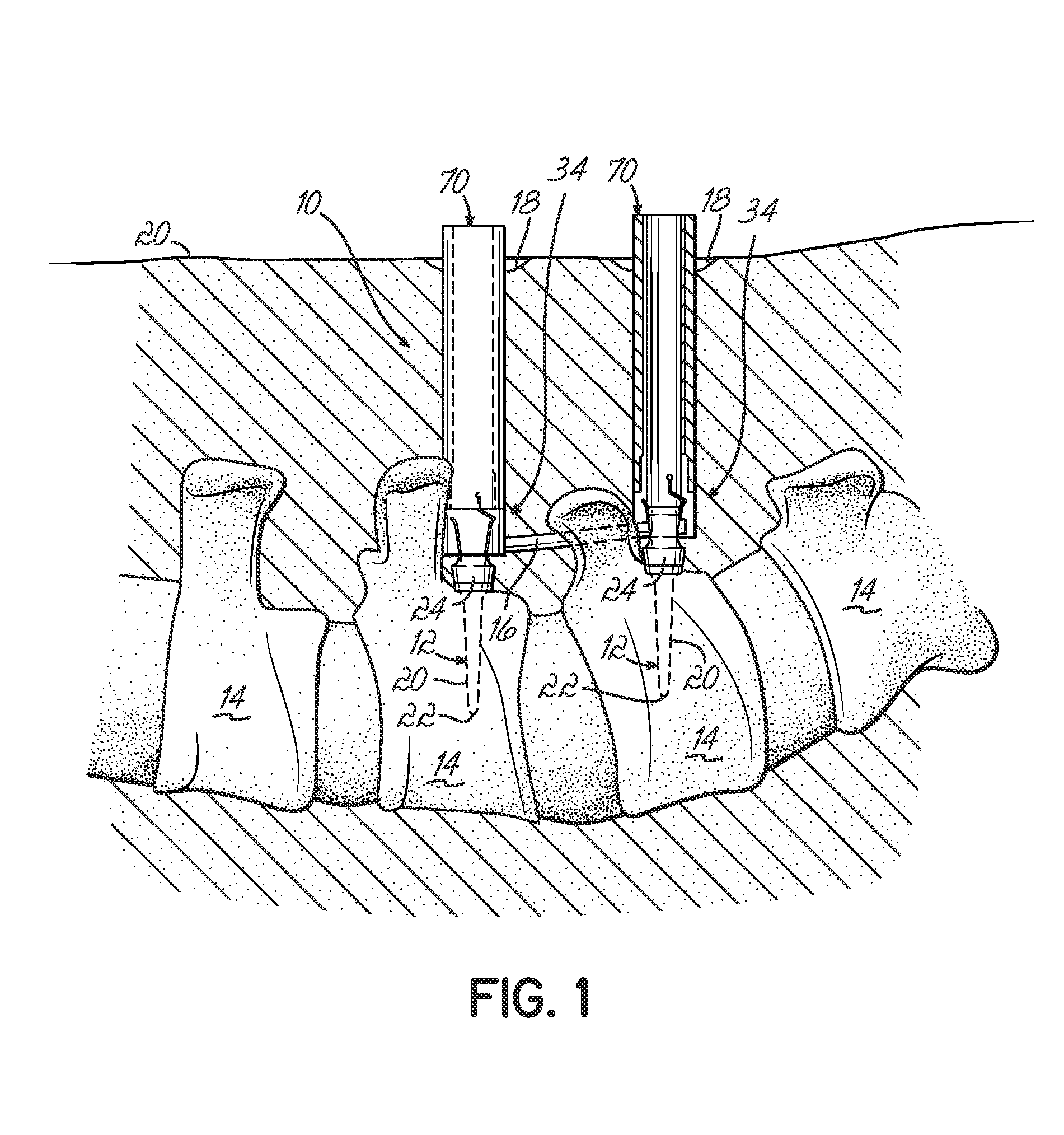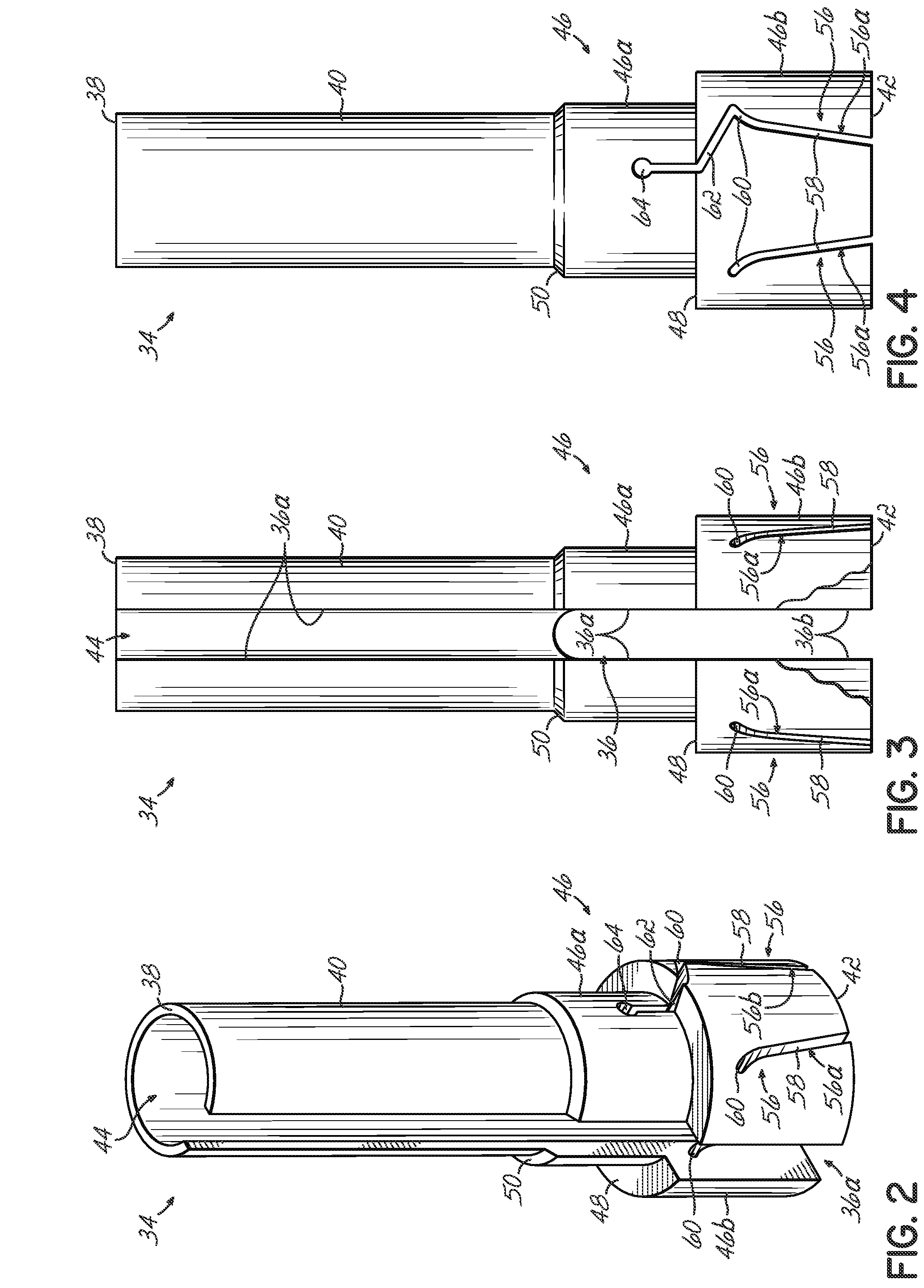Minimally invasive vertebral anchor access system and associated method
a vertebral anchor and access system technology, applied in the field of minimally invasive vertebral anchor installation, can solve the problems of reduced nerve function, reduced patient recovery, and difficulty in visualization of the alignment accuracy of the spine rod and the anchor head, so as to promote patient recovery post-surgery, the effect of reducing the amount of surgery and promoting patient recovery
- Summary
- Abstract
- Description
- Claims
- Application Information
AI Technical Summary
Benefits of technology
Problems solved by technology
Method used
Image
Examples
Embodiment Construction
[0034]Referring to the Figs., various embodiments of a minimally invasive spinal fixation construct 10 and associated installation method are shown. In FIG. 1, the spinal fixation construct 10 includes a number of vertebral anchors 12 which in one embodiment are each pedicle screw assemblies, each of which is inserted into selected vertebrae 14 of a patient. The pedicle screw assemblies 12 are joined together in the spinal fixation construct by a connecting element 16 which in one embodiment is a spine rod. The connecting element 16 may be something other than a rigid rod according to alternative embodiments of this invention. According to various aspects of this invention, the individual pedicle screw assemblies 12 may be inserted into the patient through discrete and often individual incisions 18 in the patient's skin 20. In certain instances, a single incision 18 may be available to provide installation of multiple pedicle screw assemblies 12 in adjacent vertebrae 14. The small, ...
PUM
 Login to view more
Login to view more Abstract
Description
Claims
Application Information
 Login to view more
Login to view more - R&D Engineer
- R&D Manager
- IP Professional
- Industry Leading Data Capabilities
- Powerful AI technology
- Patent DNA Extraction
Browse by: Latest US Patents, China's latest patents, Technical Efficacy Thesaurus, Application Domain, Technology Topic.
© 2024 PatSnap. All rights reserved.Legal|Privacy policy|Modern Slavery Act Transparency Statement|Sitemap



